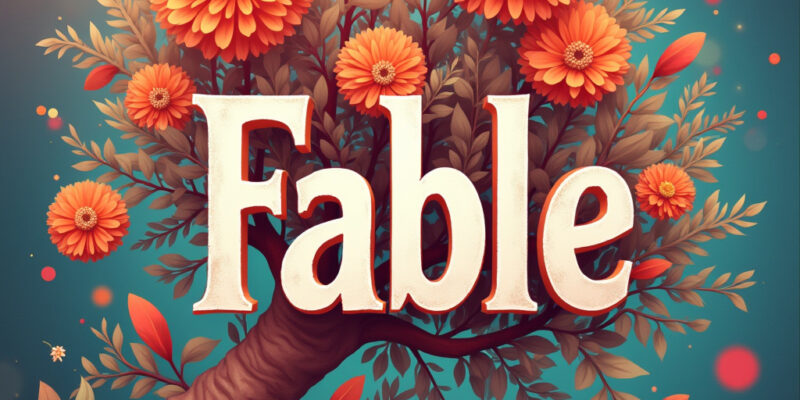What is a Fable?
A fable is a succinct story that conveys a moral lesson, often featuring animals as characters that speak and act like humans. These tales, passed down through generations, serve not only as entertainment but also as vehicles for teaching important life lessons. The simplicity of their narratives belies the depth of their messages, making them accessible to audiences of all ages.
The Origins of Fables
Fables have ancient roots, tracing back to various cultures around the world. The most famous fables can be credited to Aesop, a storyteller from ancient Greece, whose tales have transcended time and geography. Aesop’s fables, such as “The Tortoise and the Hare” and “The Boy Who Cried Wolf,” showcase the universal truths of human nature through the lens of animal behavior.
Why Animals?
Using animals in fables serves a dual purpose. First, it allows for a playful and imaginative approach to storytelling. Readers can relate to the characters without feeling threatened by the moral implications. Second, animals embody specific traits that are easily recognizable. For example, the cunning fox represents trickery, while the loyal dog symbolizes fidelity. This anthropomorphism makes the moral lessons more vivid and memorable.
Classic Examples of Fables
To illustrate the power of fables, let’s explore a couple of classic examples:
- The Ant and the Grasshopper: In this tale, the diligent ant prepares for winter by gathering food, while the carefree grasshopper spends his summer singing. When winter arrives, the grasshopper finds himself hungry and cold, while the ant is well-prepared. The moral? Hard work and planning ahead pay off.
- The Fox and the Grapes: A hungry fox sees a bunch of grapes hanging high on a vine. After several attempts to reach them and failing, he walks away, declaring that the grapes are probably sour anyway. This story teaches us about cognitive dissonance and how we sometimes belittle what we cannot obtain.
The Relevance of Fables Today
In a rapidly changing world, fables remain relevant. They offer timeless wisdom that applies to various aspects of modern life, from personal relationships to professional ethics. Fables can be seen as the original self-help books, providing guidance in a concise and engaging manner. Moreover, they encourage critical thinking; readers often reflect on the deeper meanings behind the stories.
Fables in Education
Many educators incorporate fables into their curricula to teach moral values and critical thinking skills. Through discussions about the characters and their choices, students learn to identify ethical dilemmas and explore the consequences of actions. Teachers often use fables as a springboard for creative writing, encouraging students to craft their own stories with moral lessons.
Modern Adaptations of Fables
The charm of fables has inspired numerous adaptations in literature, film, and other media. Contemporary authors and filmmakers often reimagine classic fables, placing them in modern contexts or using different characters to convey the same moral lessons. For instance, movies like “Zootopia” not only entertain but also delve into themes of prejudice and cooperation, echoing the timeless messages of traditional fables.
Creating Your Own Fable
Writing a fable can be a fun and creative exercise. Here are a few tips to guide you:
- Choose Your Characters: Think of animals that embody specific traits or human behaviors.
- Establish a Conflict: Introduce a problem or situation that the characters must navigate.
- Deliver the Moral: Conclude with a clear lesson that emerges from the characters’ experiences.
By crafting your own fable, you can explore your creativity while contributing to the rich tradition of storytelling.
Conclusion
Fables are more than just simple stories; they are profound narratives that capture the essence of human experience. Through the use of animal characters and relatable scenarios, they provide insight into our nature and guide us in making choices. Whether you are revisiting a classic fable or creating your own, the lessons they impart continue to resonate, reminding us of the values that shape our lives.




